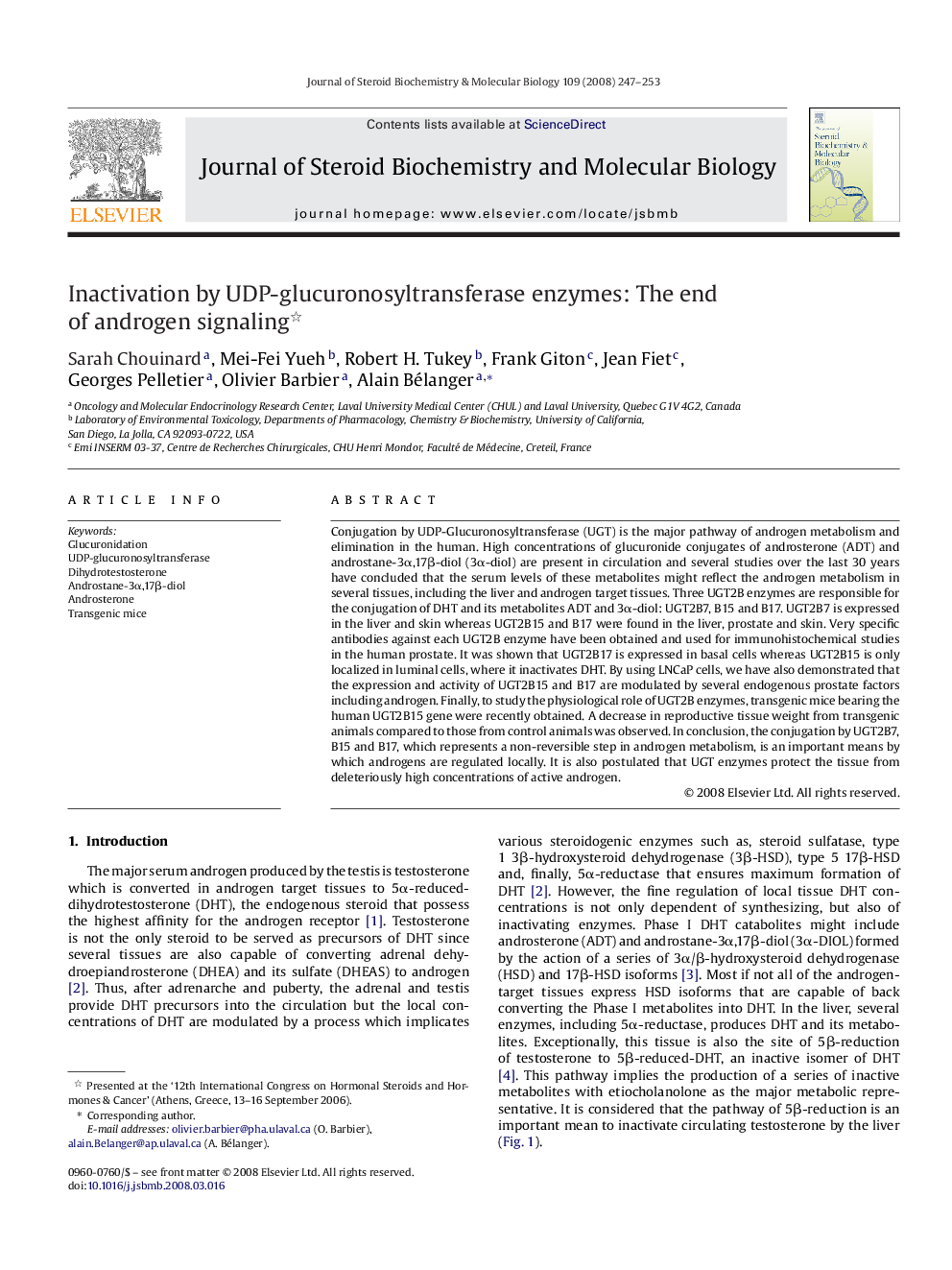| کد مقاله | کد نشریه | سال انتشار | مقاله انگلیسی | نسخه تمام متن |
|---|---|---|---|---|
| 1992904 | 1541068 | 2008 | 7 صفحه PDF | دانلود رایگان |

Conjugation by UDP-Glucuronosyltransferase (UGT) is the major pathway of androgen metabolism and elimination in the human. High concentrations of glucuronide conjugates of androsterone (ADT) and androstane-3α,17β-diol (3α-diol) are present in circulation and several studies over the last 30 years have concluded that the serum levels of these metabolites might reflect the androgen metabolism in several tissues, including the liver and androgen target tissues. Three UGT2B enzymes are responsible for the conjugation of DHT and its metabolites ADT and 3α-diol: UGT2B7, B15 and B17. UGT2B7 is expressed in the liver and skin whereas UGT2B15 and B17 were found in the liver, prostate and skin. Very specific antibodies against each UGT2B enzyme have been obtained and used for immunohistochemical studies in the human prostate. It was shown that UGT2B17 is expressed in basal cells whereas UGT2B15 is only localized in luminal cells, where it inactivates DHT. By using LNCaP cells, we have also demonstrated that the expression and activity of UGT2B15 and B17 are modulated by several endogenous prostate factors including androgen. Finally, to study the physiological role of UGT2B enzymes, transgenic mice bearing the human UGT2B15 gene were recently obtained. A decrease in reproductive tissue weight from transgenic animals compared to those from control animals was observed. In conclusion, the conjugation by UGT2B7, B15 and B17, which represents a non-reversible step in androgen metabolism, is an important means by which androgens are regulated locally. It is also postulated that UGT enzymes protect the tissue from deleteriously high concentrations of active androgen.
Journal: The Journal of Steroid Biochemistry and Molecular Biology - Volume 109, Issues 3–5, April 2008, Pages 247–253